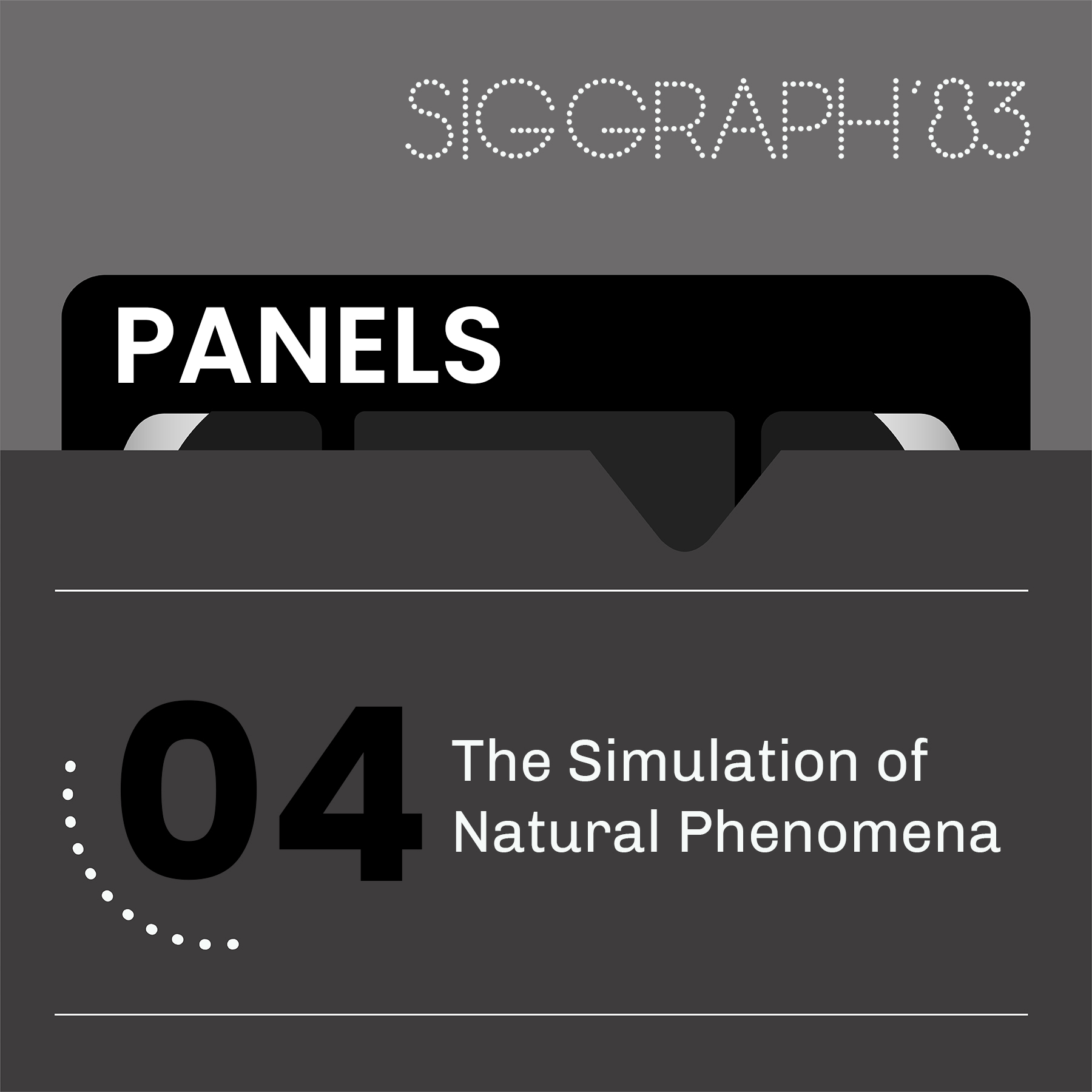“The simulation of natural phenomena” Moderated by
Conference:
Type(s):
Entry Number: 04
Title:
- The simulation of natural phenomena
Presenter(s)/Author(s):
Abstract:
This panel will discuss the issues and the problems associated with the simulation of natural phenomena. This is a difficult area of research since it generally involves complex data bases and in many instances time variant phenomena. The computational loads can become enormous as one considers the physics or the mathematical modeling of structures. Most items in nature, trees, clouds, fire and comets being some examples, have not been displayed realistically in computer graphics. This lack stems from a few different problems, all of which are significant. The first is the fact that realistic portrayals require large amounts of storage and consequently large compute time. Nature is able to create diverse detail at the most minute levels within an object of grandoise scale. The second problem is that of diversity of design within a given framework. For example, if a scene requires two dozen poplar trees, how does the designer construct trees that look different but are undeniably poplars? Humans typically become tired after the first few iterations of such a design process, with a resulting degradation in the subsequent models. Clearly, this problem applies to all of the phenomena mentioned above. Finally, there is a lack of models. First, second and third order representations are commonly used in computer graphics to model various kinds of surfaces and their boolean combinations. However, their applications to objects, which do not lend themselves well to being described as surfaces has not been addressed sufficiently. Previous attempts at realism have dealt with the appearances of the surfaces being modeled, in terms of their illumination or relief. More recently, fractal methods have introduced a new degree of realism into terrain modeling systems. However, it appears that natural phenomena will require more research into the fundamental way things occur in nature, and in terms of computer graphics, their representation will build on previous work, but will still require new modeling techniques.





